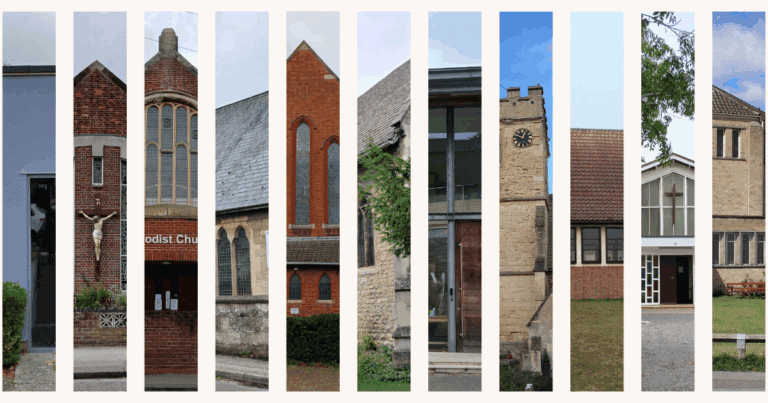
Churches
St Ebbe’s Church, Lime Walk
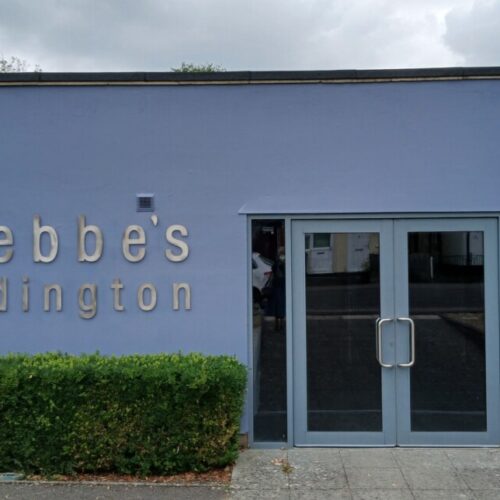
A modern building housing an offshoot of St Ebbe’s Church, Oxford.
Headington Methodist Church, Lime Walk
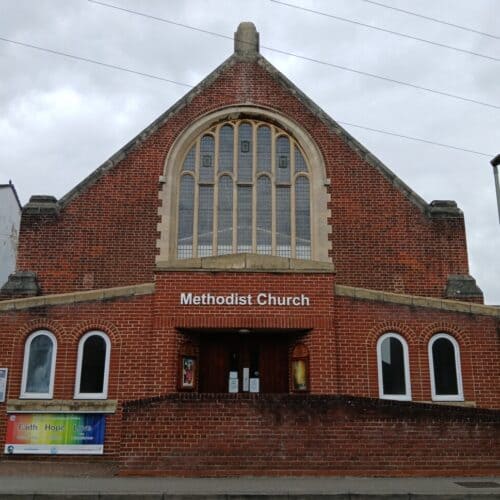
This redbrick church was built in 1932, a replacement for the original chapel of 1889, in New High Street, now the Methodist Church Hall. It looks out from a broad frontage, with one large round-headed window of seven lights set beneath the gable. The porch was replaced c.2000.
All Saints, Lime Walk
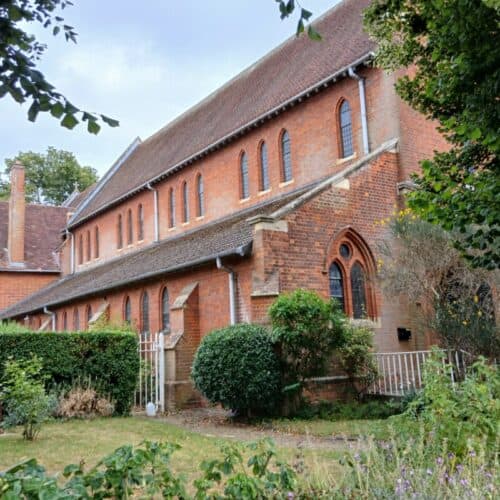
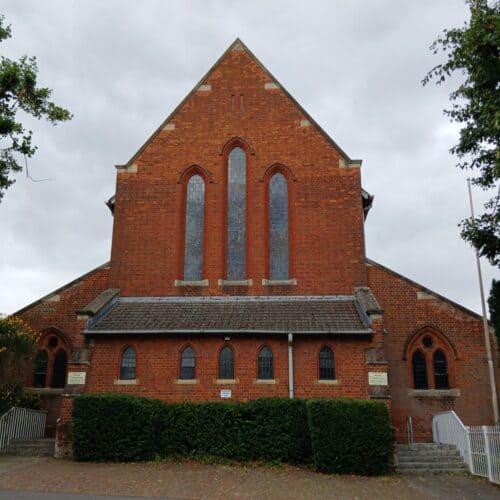
Initially a small chapel was built and dedicated on All Saints’ Day 1870. In 1910 a new and larger church consisting only of the nave was built, funded by the Morrell family and the villagers of New Headington. Fund-raising to add both a chancel with choir stalls and a vestry were delayed by the outbreak of the 1914-18 war, and the chancel was not added until 1937. Inside it has fine columns and high arched windows. There is a brass plate on the south wall, commemorating a loss in the Titanic. The inscription reads, ‘To the glory of God and in memory of John Wesley Woodward Bandsman of the S.S. Titanic who with his comrades nobly performed his duty to the last when the ship sank after collision with an iceberg on April 15 1912.’ It records that he was born on September 11, 1879, and at the bottom has the quotation, ‘Nearer my God to thee.’ It is sobering to reflect how soon after the completion of the new building this memorial must have gone up.
The chancel and Lady Chapel are later additions to the main church (although it looks all of a piece), and the Lady Chapel is now glazed in. The glass was given in memory of Edith Bonner, for many years one of the OED lexicographers, and is beautifully engraved with T. S. Eliot’s words ‘In my end is my beginning’, set out in undulating lines.
Church of Corpus Christi (RC), Margaret Road
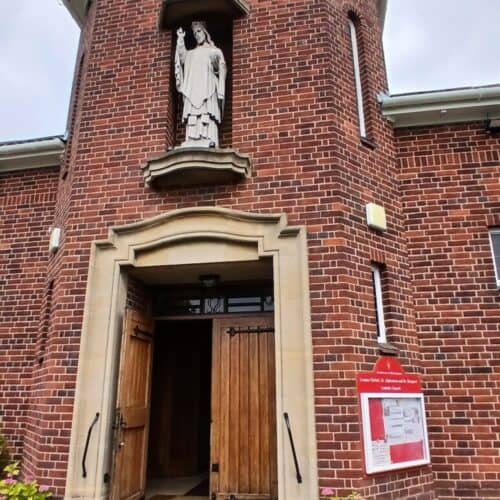
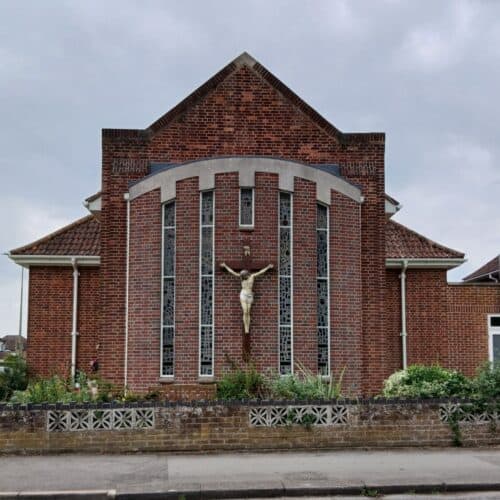
The Church of Corpus Christi, St Alphonsus and St Margaret is a twentieth-century build, first initiated in the 1930s (Cardinal Hinsley blessed the foundation stone in October 1936). There was a solemn opening in 1937 but (as the church history on the website explains) the Second World War and the scarcity of money and materials meant that it was not completed until 1953. The church website notes that ‘The simplicity of style of the Church has been described as “Californian Romanesque”’.
Inside, Corpus Christi is a light-filled church with an east window commemorating the Forty Martyrs. Those depicted include Swithin Wells, son of Hampshire family. He was a teacher and often (as here) he is depicted with a pile of books. He stands to the left of the sanctuary, below the figure of Nicholas Owen (d. 1606), carpenter and Jesuit lay brother, famous for his construction of priest holes, who was finally captured and died under torture in the Tower of London.

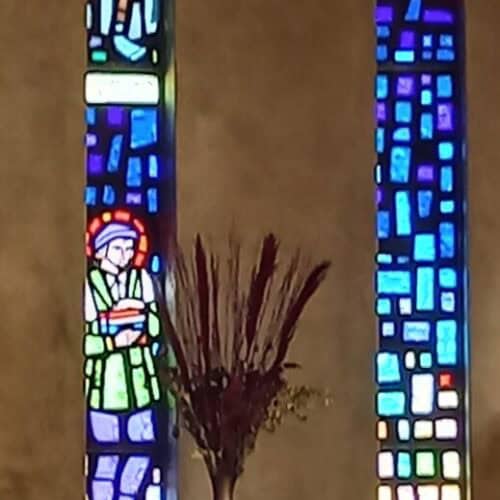
Cornerstone Christian Centre, Quarry High Street
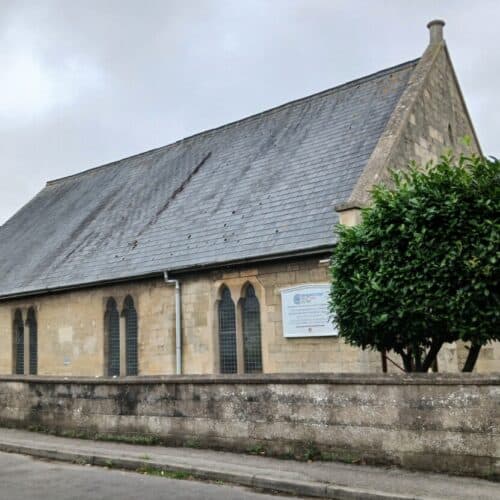
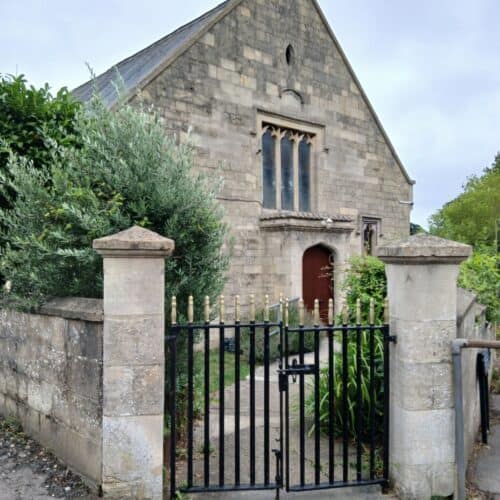
What is now the Cornerstone Christian Centre originated as a Wesleyan Methodist Chapel in 1860, replacing an earlier chapel in Trinity Road. A Sunday School building was added in 1874, and the chapel was further enlarged n 1931. Quarry Methodist Chapel closed in 2004, and reopened in 2006 as the Cornerstone Christian Centre.
Holy Trinity, Headington Quarry
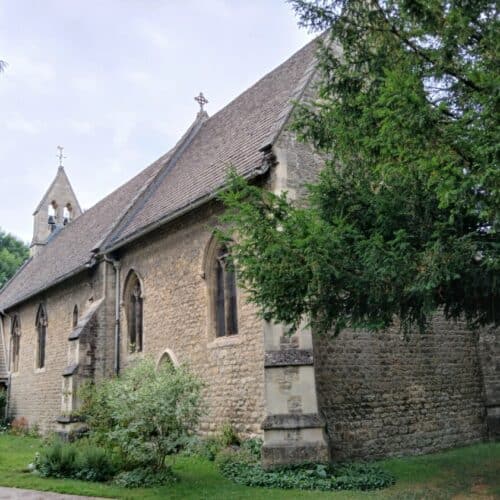
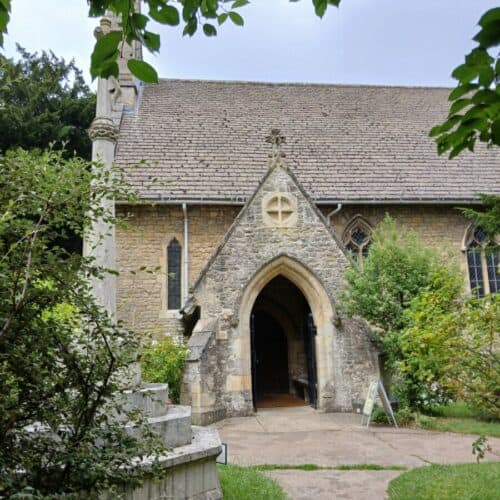
Holy Trinity’s grey stone, medieval look is deceptive: this is one of Gilbert Scott’s Gothic Revival churches, and it was built in 1848-9 following an appeal by Bishop Wilberforce (in a sermon preached at St Aldates) for the foundation of a church to serve the unchurched community of Headington Quarry. Today it is probably best-known for a later association: C. S. Lewis and his brother worshipped and are buried here. There is an engraved glass window by Sally Scott, incorporating designs based on the ‘Narnia’ stories, commemorating C. S. Lewis.
Headington Baptist Church
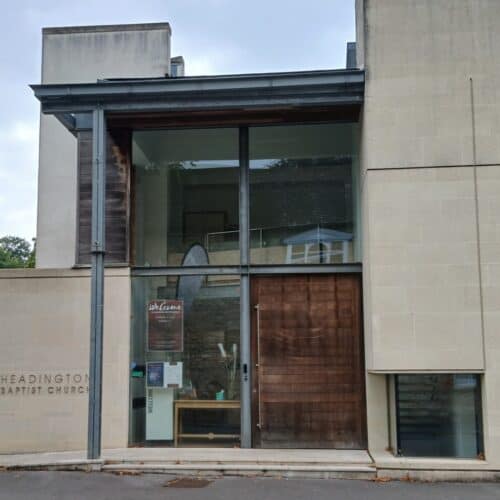
Following an earlier mission station, a chapel was built in Old High Street in 1901. It was extended twice, once in 1934 and then in 1971. Finally in 2006 a completely new building replaced the 1901 construction.
St Andrew’s, Old Headington
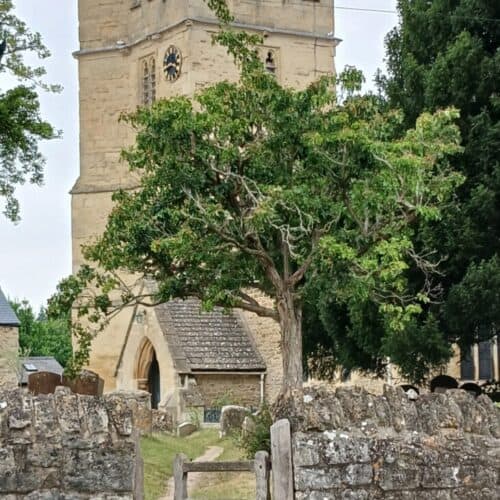
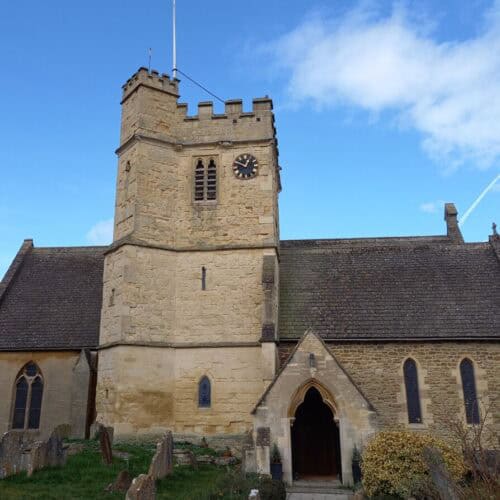
St Andrew’s Church is Headington’s oldest surviving building. It is a Norman church with later additions (the tower is thirteenth century, as is the two-bay south aisle). Inside there is a fine mid-twelfth-century century chancel arch, with two orders of zigzags and basket-work decoration on the shafts.

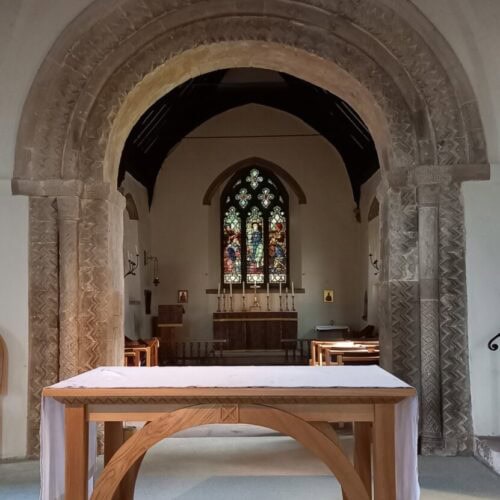
St Andrew’s also has some modern, and notable, stained glass. The 1932 west window, by Archibald Nicholson, commemorates a lady with the splendid name of Vashti de Montfort Wellborne. An heiress and local benefactor, she lived with her mother at nearby Barton Manor. The two main lights of the window (below the figures of Our Lady and St Anne) show Simon de Montfort, regarded as a founder of the English Parliament, above the Chapter House of Westminster (where the first Parliament assembled), and Vashti, Queen of Persia, above a depiction of Barton Manor. Apparently the depiction of Vashti, a pagan queen, caused some misgivings, but they were overcome, as explained by George Day, Vicar of St Andrew’s 1946-56. In an interview reported in the Oxford Mail of 14 January 1955, he said: ‘I don’t suppose there is another window to Vashti in the country, and there was some difficulty in getting the Chancellor [of the Diocese of Oxford] to allow this one. He at first refused, but when it was ingeniously pointed out to him that Queen Vashti was most virtuous and exemplary in her refusal to attend her husband in his cups the Chancellor allowed it to be put up.’
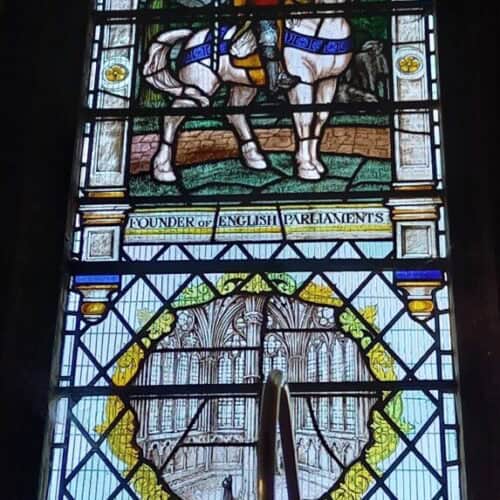
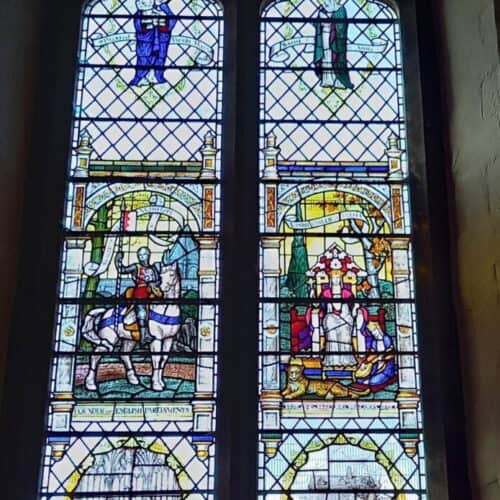
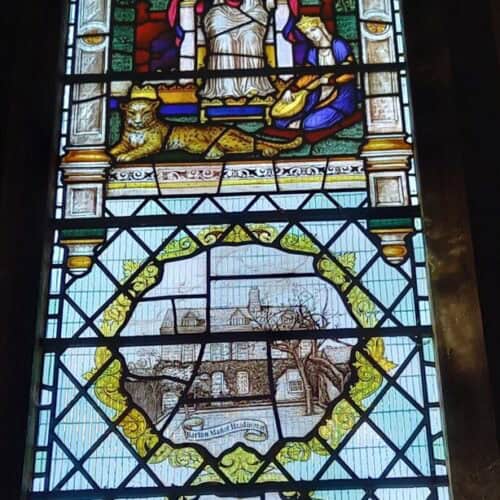
St Andrew’s also has a more recent modern window which was presumably much less controversial. This has been inserted into the west end of the south aisle, above where the font (with a 2013 oak font cover carved with panels of nets and fish to recall St Andrew) now stands. The window commemorates the ‘Fish’ Good Neighbour Scheme (people who needed help placed a fish card in their window, indicating that they needed someone to call on them), started in Headington Parish in 1961. Eventually through security concerns the scheme in that form lapsed, but the window stands as a reminder of the call to ‘love your neighbour’. I thought the simplicity of the design, with the blue and white lozenges superimposed on the two arching trees with intertwined branches, was very effective.
Church of St Anthony of Padua (RC), Headley Way
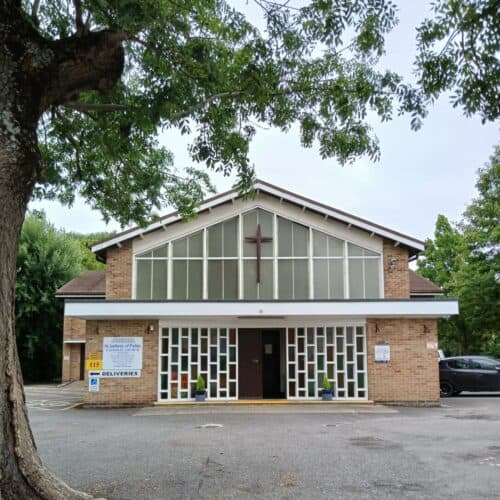
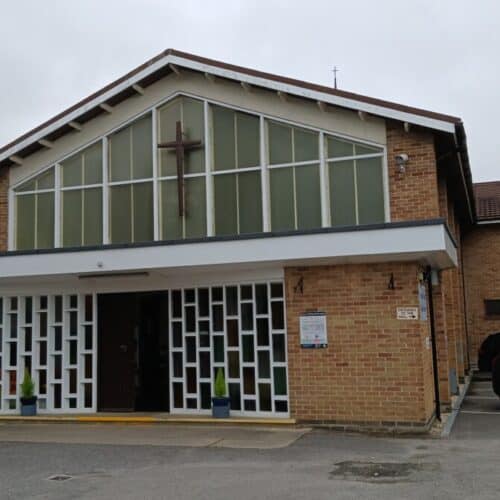
Built in 1959-60, the Church of St Anthony of Padua is spacious and light, and was originally planned as a dual-purpose church and hall. This was J. R. R. Tolkien’s parish church, and his requiem Mass was held here in 1973. The sanctuary was reordered 1998-2000 with furnishings by the sculptor David John. A crucifix by the sculptor Faith Tolkien, originally in the sanctuary, is now placed over the inner west door.
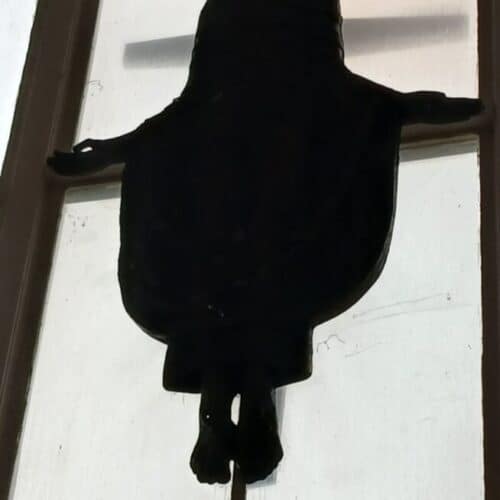
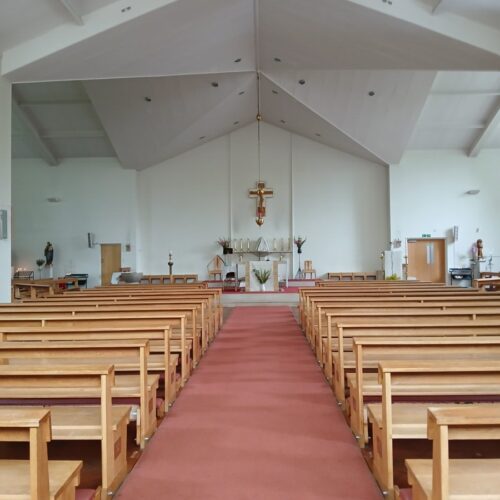
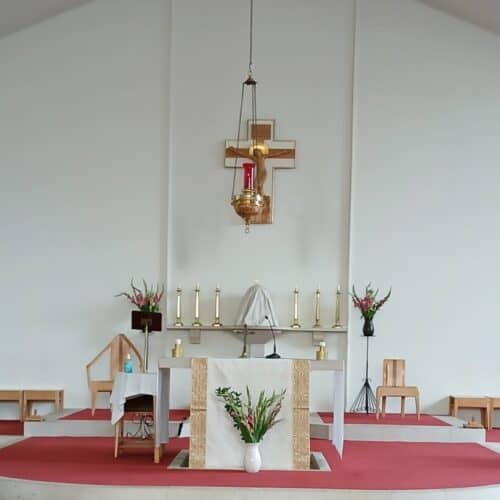
St Mary’s Church, Bayswater Road, Barton
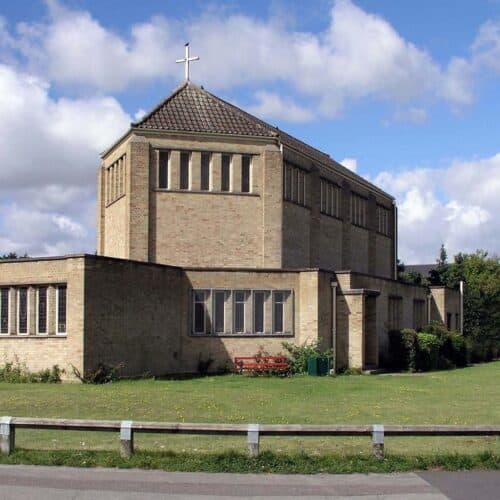
St Mary’s has a nave, low aisles and a triangular sanctuary. It was built in 1958, replacing two earlier mission chapels. One of these had been sponsored by the Society of King Charles the Martyr, and this connection is remembered in stained glass windows depicting respectively Charles I and Archbishop Laud.
Collinwood Road United Reformed Church, Risinghurst, Headington
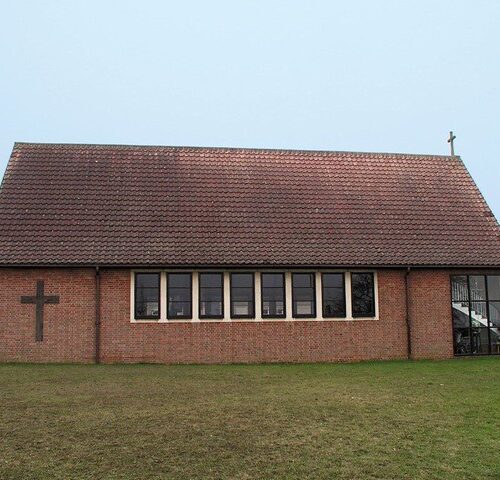
A mid-twentieth-century brick-built church on the corner of London Road (A40) and Collinwood Road in Risinghurst.
By Elizabeth Knowles
About the Author

Elizabeth Knowles is a renowned library researcher and historical lexicographer who devoted three decades of her career to Oxford University Press. Her time at OUP began with contributions to the OED Supplement and the New Shorter Oxford English Dictionary. Subsequently, she spearheaded the Quotations publishing program, solidifying her reputation as a leading expert in quotations and lexicography.
In 1999, Knowles assumed the prestigious role of Editor of the Oxford Dictionary of Quotations, a position she held continuously until her retirement from OUP in 2007. Under her editorial guidance, the eighth edition was published in 2014, marking a significant milestone in the dictionary’s history.
Knowles is a prolific writer and lecturer on the history of quotations and dictionaries. She has shared her extensive knowledge with both academic and general audiences, significantly enhancing our understanding of the role of quotations in language.
Beyond her work on the Oxford Dictionary of Quotations, Knowles is also the editor of “What They Didn’t Say: A Book of Misquotations” (2006) and “How To Read a Word” (2010). Her work continues to inspire and inform scholars, writers, and readers fascinated by the English language.
All photographs © Elizabeth Knowles unless otherwise noted
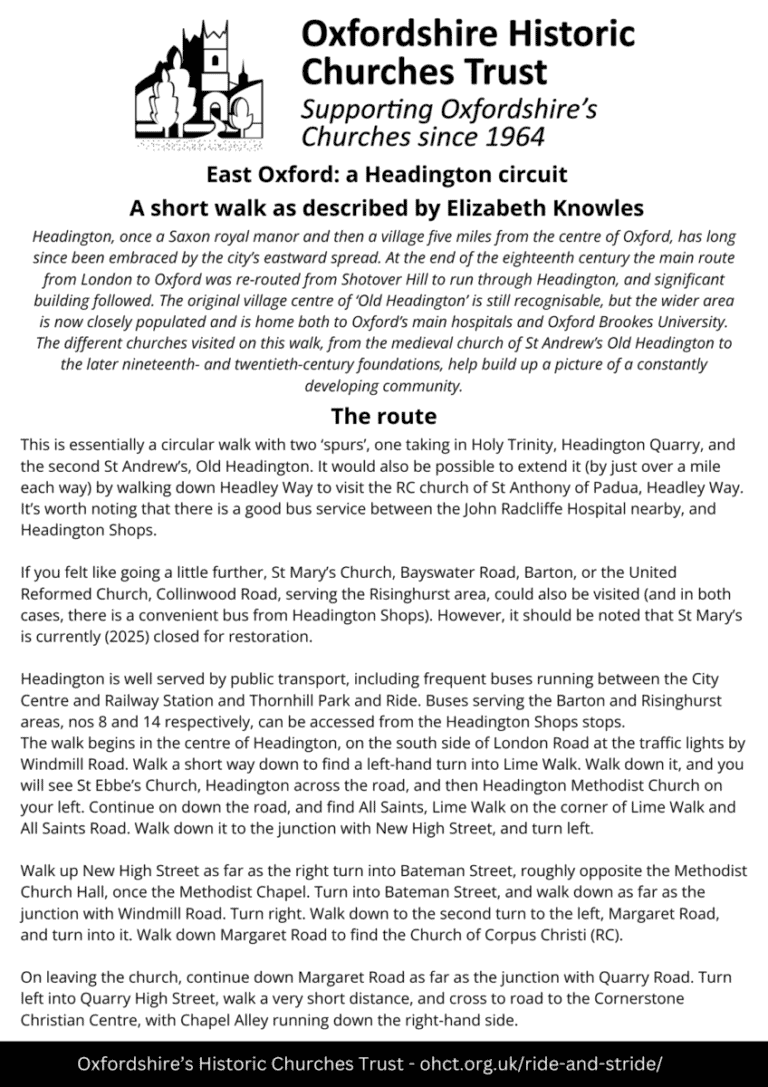
Churches visited on this route